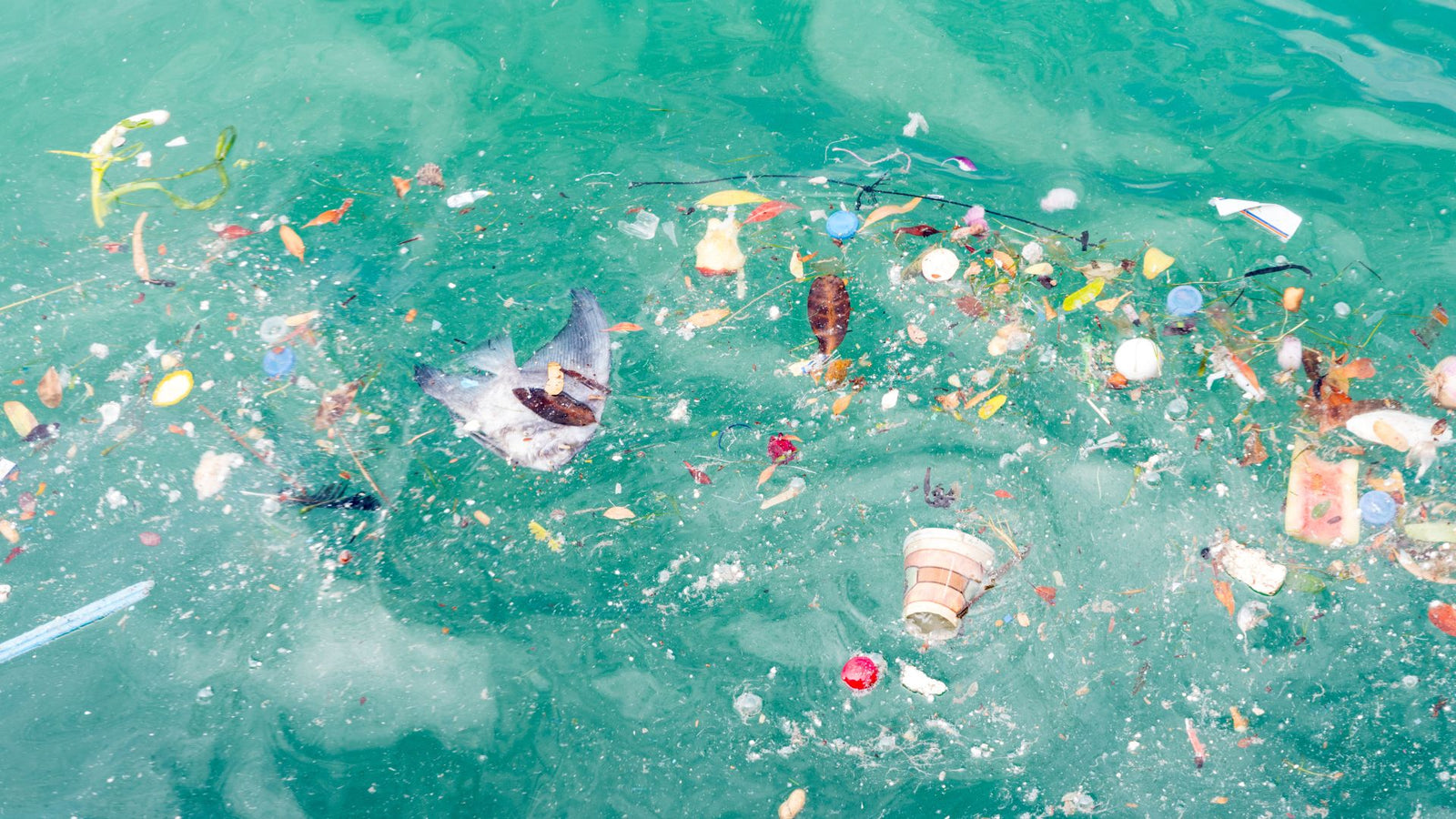The invention of plastic has played a significant role in modern society, thanks to its convenience and ease of use. However, we are now inundated with plastic not only on land but also in the ocean. Despite their many advantages, the impact of plastic on our environment is alarming. Plastic is choking our marine life, and it's time to stop its spread before it invades the entire ocean, leading to a scenario we dread to imagine.
What Are The Problems With Plastic?
Plastic was created to reduce the burden on natural resources like wood and cotton. This durable material was intended for long-term use. Unfortunately, over 380 million tons of plastic are produced each year, and 50% of that is used for single-use items. This is completely opposite to how our natural ecosystem operates. In nature, organisms follow a continuous cycle of birth, growth, death, and decomposition, where each stage supports the next generation. This natural cycle does not accommodate materials like plastic, which persist in the environment for hundreds of years without degrading.
Single-use plastics are often lightweight and small items like straws, utensils, bags, and Q-tips. Once these items are discarded, they are difficult to control, collect, and handle for recycling or disposal. Instead, they scatter across landfills, end up in oceans, and pose a significant threat to marine creatures.

What Impact Does Plastic Have On The Ocean?
Plastic pollution in the ocean has far-reaching impacts on marine ecosystems, wildlife, and even human health. The effects of plastic are varied and severe:
Harm to Marine Life
Marine animals often mistake plastic debris for food, leading to ingestion. This can cause blockages in their digestive systems, malnutrition, and even death. Additionally, animals can become entangled in larger plastic items like fishing nets, restricting their movement and leading to injuries or drowning.
Introduction of Toxic Substances
Plastics often contain harmful chemicals, such as bisphenol A (BPA) and phthalates, which can leach into the ocean. These toxic substances can be ingested by marine life, leading to health issues such as hormonal disruptions, reproductive problems, and increased mortality rates.
Microplastics and the Food Chain
As larger plastic debris breaks down, it forms microplastics, which are tiny plastic particles less than 5 millimeters in size. Microplastics can be ingested by a wide range of marine organisms, from plankton to fish. These particles can accumulate in the tissues of these organisms and move up the food chain, eventually reaching humans who consume seafood.

Economic Impact
Plastic pollution also has economic repercussions. It can affect tourism, fisheries, and shipping industries by damaging marine environments, reducing fish stocks, and causing costly clean-up operations. The economic burden of plastic pollution is felt globally, impacting both developed and developing nations.
How Does Plastic Affect the Ocean and Marine Life?
Macroplastics
Macroplastics are large plastic debris, typically items larger than 20 millimeters. These include everyday items like plastic bags, bottles, and fishing nets. In the ocean, macroplastics can cause significant harm to marine life. Marine animals often mistake these items for food. For example, sea turtles frequently ingest plastic bags, mistaking them for jellyfish. Once ingested, these plastics can cause blockages in their digestive systems, leading to malnutrition or even death. Additionally, large pieces of plastic can entangle marine animals, restricting their movement and leading to injury or drowning.
Microplastics and Nanoplastics
Microplastics are plastic particles less than 5 millimeters in size, and nanoplastics are even smaller, often invisible to the naked eye. These tiny particles are pervasive in the marine environment, stemming from the breakdown of larger plastics, as well as from products like cosmetics and synthetic clothing fibers. Microplastics and nanoplastics can be ingested by a wide range of marine organisms, from plankton to large fish. Once inside the body, these particles can cause inflammation, reduce feeding, and impair reproductive success. Additionally, microplastics can act as vectors for harmful chemicals and pathogens, further endangering marine life.

How Can We Reduce Plastic Pollution in the Ocean?
Individual Actions
Individuals can play a crucial role in reducing plastic pollution. Simple actions like using reusable bags, bottles, and utensils can significantly cut down on single-use plastics. Participating in beach clean-ups and supporting policies aimed at reducing plastic waste can also make a difference. Additionally, being mindful of plastic use in daily life and making a conscious effort to reduce, reuse, and recycle can help lessen the impact of plastic pollution on the ocean.

Businesses
Businesses have a significant impact on plastic pollution and can implement various strategies to reduce it. Adopting sustainable packaging solutions, such as compostable materials, can help decrease the amount of plastic waste produced. Companies can also invest in recycling programs and support initiatives aimed at cleaning up plastic waste. Additionally, businesses can raise awareness among consumers about the importance of reducing plastic use and encourage environmentally friendly practices.
EQUO's Compostables

EQUO offers a range of compostable products that provide an eco-friendly alternative to traditional plastics. These products are made from natural materials like sugarcane, coffee, and coconut, which break down more easily in the environment. By using EQUO's compostable products, businesses and individuals can reduce their reliance on single-use plastics and help mitigate the impact of plastic pollution on the ocean. These compostable alternatives not only reduce waste but also support a healthier and more sustainable ecosystem.
By understanding the impact of plastic on the ocean and taking proactive steps to reduce plastic pollution, we can protect marine life and preserve the health of our oceans for future generations.


